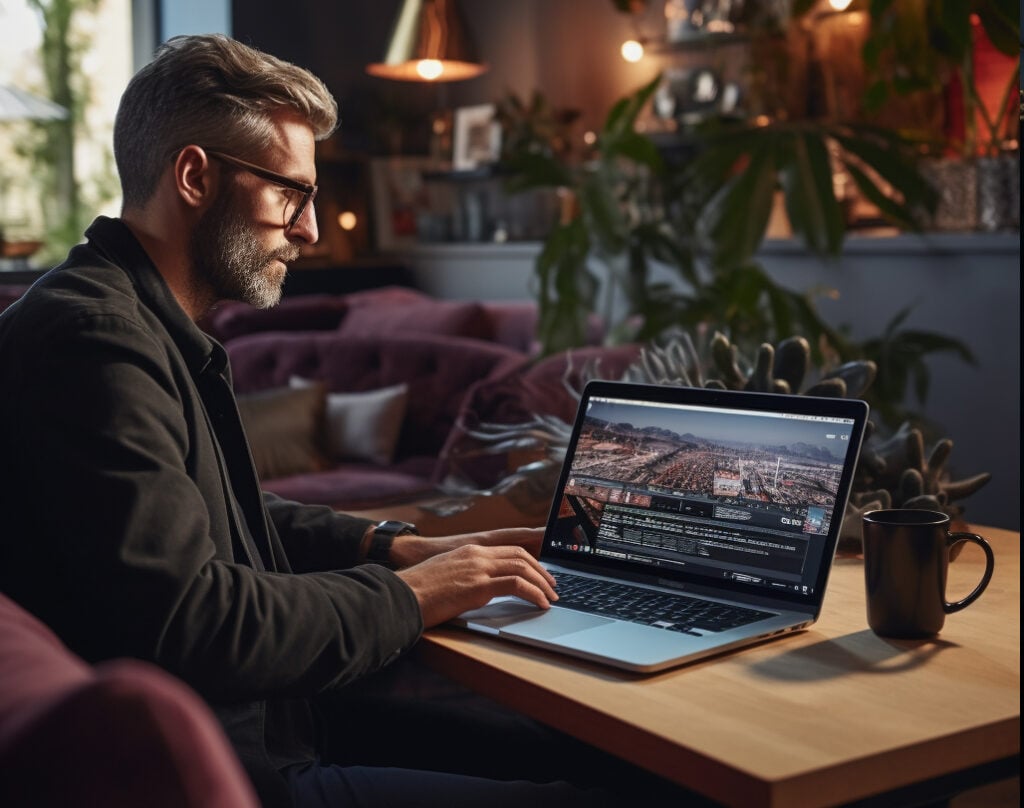Capturing pristine footage is only the first step to a successful real estate video. The journey from raw clips to a polished presentation is defined by the real estate video editing process.
Without adept editing, even the highest quality footage can become a missed opportunity, lacking the spark that captures viewers’ attention and imagination. However, a meticulously edited real estate video transcends mere marketing, attracting not just potential buyers, but also convincing homeowners to list with you.
This article aims to unveil the specific techniques and considerations that professional real estate video editors employ to transform basic footage into captivating narratives, elevating property tours to their highest potential.
Logical Sequence and Continuity
When embarking on real estate video editing, the arrangement of content plays a pivotal role in the viewer’s experience. It’s crucial to edit the footage so that rooms appear in a logical sequence, akin to a natural walk-through of the home.
This task can be challenging, especially when the initial footage is shot out of order due to unavoidable circumstances at the property, like last-minute staging or ongoing construction. Overcoming this requires a keen eye for detail and a deep understanding of spatial relationships, ensuring the final edit intuitively guides viewers through the property as if they were there in person.
Musical Scoring and Timing
Music is the unsung hero of effective real estate video editing. The right track can complement the property’s ambiance, stirring emotion and enhancing the visual experience.
However, it’s not just about choosing the right music. It’s also about timing cuts, transitions, and the property’s highlight reel with the music’s rhythm. Skillfully synchronize music crescendos with “money shots” to leave a lasting impact, ensuring these peaks in emotion coincide with the property’s most stunning visuals.
Frame Rate and Playback Smoothness
Professional real estate video editing demands a keen understanding of frame rates. By standardizing a 23.98fps (frames per second) timeline for all projects, editors lay the groundwork for consistent playback smoothness.
For clips shot at 29.97fps, conversion to 80% speed is a nuanced technique that eliminates jitter, providing a fluid viewing experience that potential buyers find both pleasing and professional.
Transitional Mastery
Transitions are more than just moving from one clip to another; they’re an opportunity to maintain narrative flow and visual interest. In real estate video editing, dissolves can create a seamless experience, subtly indicating a change in perspective or setting.
The “dip to white” is particularly effective when transitioning between exterior and interior shots, signaling a natural progression rather than an abrupt shift. These transitions must be handled with care, ensuring they enhance rather than disrupt the visual storytelling.
Stabilization and Image Refinement
Even the steadiest hands produce footage that can benefit from stabilization in post-production. Warp Stabilizer is an invaluable tool in real estate video editing, but moderation is key—limiting the strength to a maximum of 20% maintains natural movement.
Image refinement doesn’t stop there. Adjusting brightness and correcting color casts can make the difference between a good video and a great one. For footage that appears flat, the Lumetri Color effect offers the chance to add depth and vibrancy, ensuring each shot reflects the property’s true aesthetic.
Pace and Viewer Engagement
The pace of a video can make or break viewer engagement. It’s a delicate balance. Too fast, and viewers can’t appreciate the property. Too slow, and they lose interest.
The ideal walkthrough speed varies, but it should allow the audience to absorb the beauty of the property while maintaining forward momentum. This balance is critical in real estate video editing, demanding a nuanced understanding of both the property’s highlights and viewer behavior.
Quality Control and Final Touches
In the final stages of real estate video editing, quality control is paramount. This involves the tough decision of cutting shots that, despite all efforts, detract from the video’s overall quality. Overly shaky footage, confusing angles, or repetitive shots have no place in your final product.
A comprehensive review of the video ensures it meets the highest standards of pacing, stability, and visual/audio consistency before it reaches potential buyers.
Final Thoughts: Elevating Your Real Estate Video Editing Craft
The techniques outlined above are foundational to real estate video editing, elevating a simple video tour to a captivating visual journey. As the real estate market evolves, so too must our approaches to video editing. Continual learning and adaptation of new strategies are essential.
Remember, a professionally edited video does more than showcase a property—it enhances its perceived value and desirability, creating a lasting impression that can inspire viewers to take action. Embrace these practices, and watch as your property videos set a new standard in real estate video marketing excellence.











